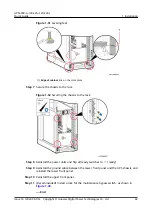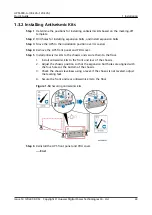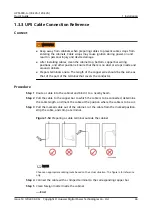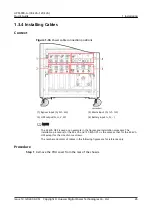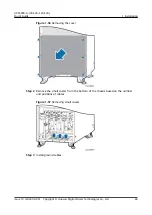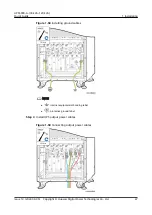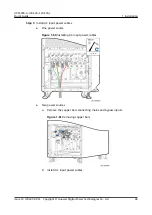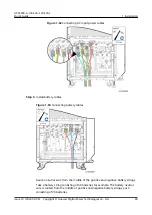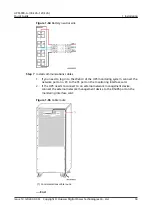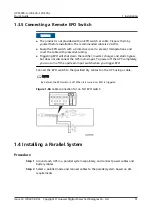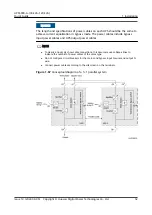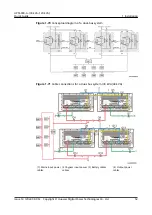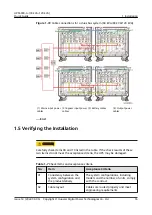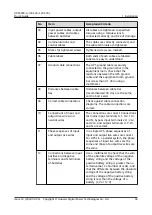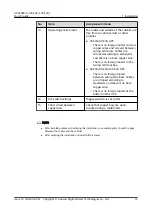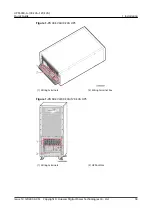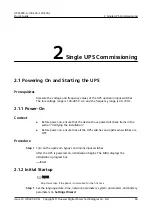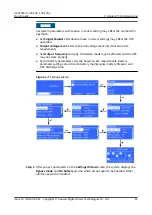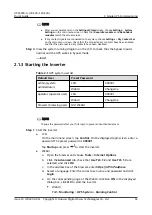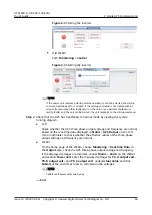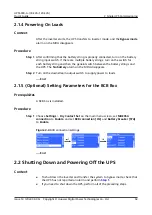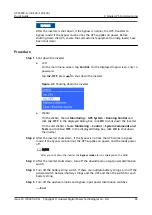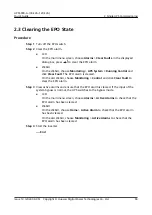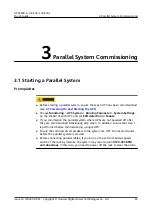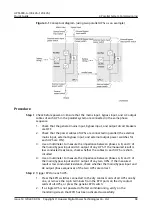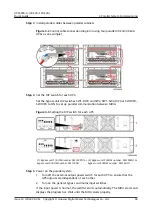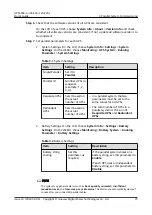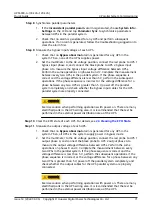
No.
Item
Acceptance Criteria
03
Input power cables, output
power cables, and cables
between batteries
All cables are tightened to specified
torques using a torque wrench,
connected correctly, and free of damage.
04
Communications and
control cables
The cables are correctly connected, and
the cable terminals are tightened.
05
Marks for tightened screws
Tightened screws are marked.
06
Cable labels
Both ends of each cable are labeled.
Labels are easy to understand.
07
Ground cable connections
The UPS ground cable is securely
connected to the ground bar in the
equipment room. Check that the
resistance between the UPS ground
cable and the equipment room ground
bar is less than 0.1 ohm using a
multimeter.
08
Distances between cable
ties
Distances between cable ties
(recommended: 30 cm) are the same,
and no burr exists.
09
Correct cable connections
Check against cable connection
diagrams. The cable connections are
correct.
10
Connections of input and
output live wires and
neutral wires
The connections are correct. Connections
for mains input terminals 1L1, 1L2, 1L3,
and N, bypass input terminals 2L1, 2L2,
and 2L3, and output terminals U, V, W,
and N are correct.
11
Phase sequences of input
and output live wires
In a single UPS, phase sequences of
input and output live wires are correct.
For UPSs in a parallel system, the phase
sequences of input live wires are the
same and those of output live wires are
the same.
12
Connections between input
positive and negative
terminals and N terminals
of batteries
Use a multimeter to check that the sum
of the absolute voltage of the negative
battery string and the voltage of the
positive battery string is greater than a
certain value (2 x Number of cells), and
that the difference between the absolute
voltage of the negative battery string
and the voltage of the positive battery
string is less than the voltage of a
battery (2 V or 12 V).
UPS5000-A-(30 kVA–120 kVA)
Quick Guide
1 Installation
Issue 14 (2022-09-06) Copyright © Huawei Digital Power Technologies Co., Ltd.
56

